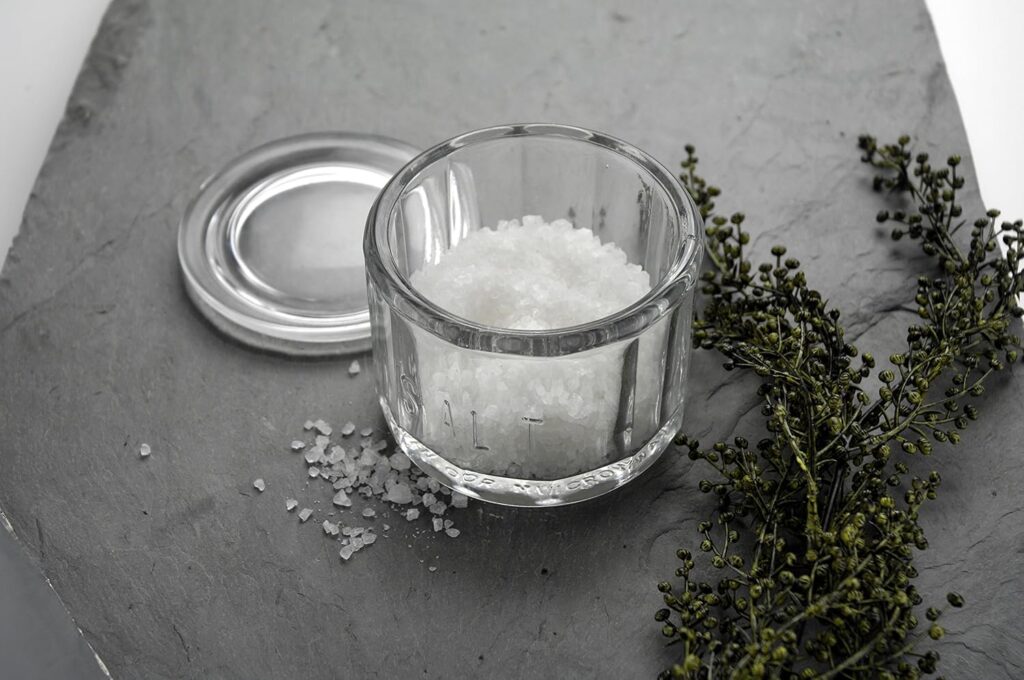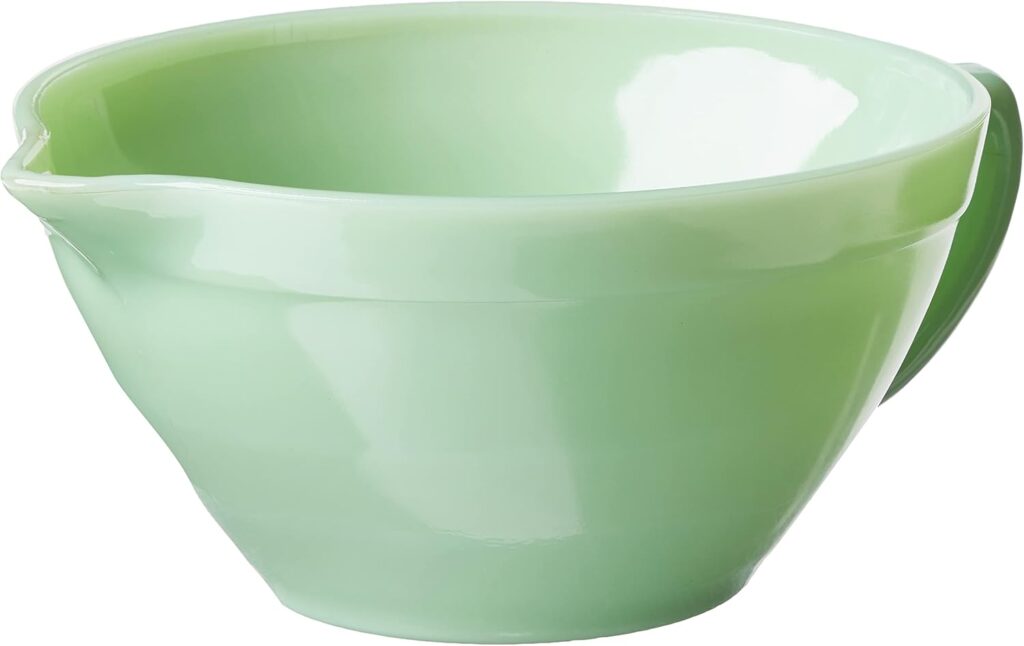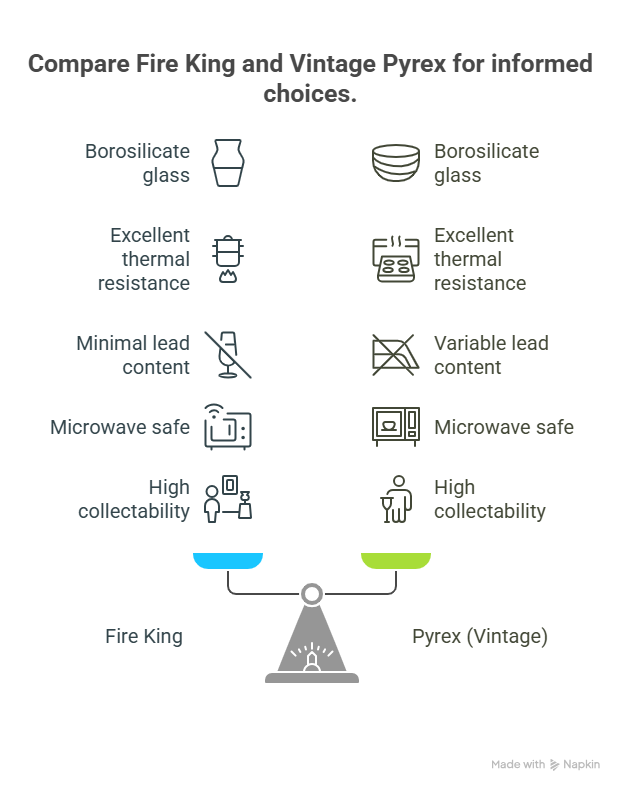You’re standing in your kitchen, clutching that gorgeous jade-green Fire King mug you scored at last weekend’s car boot sale, wondering if it’s safe to pop it in the microwave for your morning brew.
You’re not alone in this dilemma. For decades, Fire King glassware has captured the hearts of collectors and practical home cooks alike, becoming the holy grail of heat-resistant glass.
This isn’t just about convenience it’s about preserving these beautiful pieces whilst getting the most from their legendary durability.
Whether you’ve inherited Grandmum’s complete Fire King dinner set or you’re building your collection one piece at a time, understanding microwave safety isn’t just smart it’s essential.
After all, there’s nothing quite like the peace of mind that comes from knowing your beloved glassware won’t crack under pressure.
But here’s where things get interesting: not all Fire King pieces are created equal, and the answer to their microwave safety might surprise you.
WHAT MAKES FIRE KING SPECIAL IN THE WORLD OF HEAT-RESISTANT GLASS
Fire King isn’t just another pretty face in the glassware cabinet.
Originally produced in the 1940s for everyday use rather than display, this remarkable glassware was crafted from low-expansion borosilicate glass, making it practically indestructible under thermal stress.
The genius behind Fire King lies in its composition. Unlike ordinary glass that shatters when exposed to sudden temperature changes, Fire King’s borosilicate construction gives it exceptional thermal shock resistance properties.
This means it can handle the dramatic temperature swings that would leave lesser glassware in pieces on your kitchen floor.
The Anchor Hocking Legacy

Anchor Hocking Glass Corporation introduced their hugely popular “Fire-King” glassware in 1942, which continued in production until the late 1970s.
The brand became synonymous with reliability, often given away at petrol stations or tucked into flour bags as promotional items a testament to how much manufacturers trusted its durability.
THE DEFINITIVE ANSWER: IS FIRE KING MICROWAVE SAFE?

The short answer? Yes, most Fire King pieces are microwave safe, but there’s a crucial caveat that every collector should know.
Most Fire King pieces are microwave safe, but there are important points to keep in mind. The key lies in understanding which pieces you own and their manufacturing period.
Modern vs. Vintage: The Critical Distinction
Here’s where things get fascinating for us heat-resistant glass enthusiasts:
Vintage Fire King (1940s-1970s):
- Made from low-expansion borosilicate glass
- The low-expansion borosilicate glass can take high oven temperatures, leading to thermal shock resistance
- Generally microwave safe when in good condition
Modern Fire King (1990s onwards):
- Currently made of tempered soda-lime-silicate glass in the US and borosilicate in Japan
- Still microwave safe, but different composition
Expert Verification from Collectors
Fire-King collectors confirm: “We have been using Fire-King in our microwave for years without a problem”. This real-world experience from dedicated enthusiasts speaks volumes about the practical safety of these pieces.
IS THE FIRE KING JADEITE GREEN GLASS MIXING BOWL MICROWAVE SAFE?

The Fire King Jadeite glass mixing bowls have a complicated relationship with microwave safety because it was developed before microwave ovens were available for domestic use.
Therefore, we at Safekitchn, recommends that you do not use it in the microwave even though some report success with short heating times, while others recommend avoiding microwaves entirely to preserve these vintage pieces.
If that’s the case, what’s the best use? Use them for serving or preparing / mixing small batches of your favourite recipe like waffle mix and pancake.
However, the fire king Jadeite glass mixing bowl is Dishwasher safe.
IS FIRE KING AND ANCHOR HOCKING THE SAME?
No, Fire King and Anchor Hocking are not the same thing. Fire King is a brand name used by Anchor Hocking for their heat-proof glass products. Here’s the key relationship:
Fire King = Brand name for a specific product line
Anchor Hocking = The company that manufactures Fire King
The Complete Relationship
Anchor Hocking Glass Corporation began as the Hocking Glass Company in 1905, and merged with Anchor Cap and Closure Corporation in 1937.
In 1942, Anchor Hocking Glass began producing their famous line of ovenproof, low-expansion borosilicate glassware and branded it as “Fire King”.
Key Facts:
- Company: Anchor Hocking Glass Corporation
- Brand: Fire King (their heat-resistant glassware line)
- Production Period: Original Fire King was manufactured from about 1940-1976, with reproductions starting in 2000
- Current Status: Anchor Hocking still produces Fire King glass bakeware today
Think of it this way: Fire King is to Anchor Hocking what iPhone is to Apple, it’s a specific product line created by the parent company.
You can own Fire King glassware, but you’re actually buying from Anchor Hocking Corporation.
This distinction matters for collectors, as authentic Fire King pieces will bear Anchor Hocking markings and represent the company’s premium heat-resistant glass line.
HOW TO IDENTIFY MICROWAVE-SAFE FIRE KING PIECES
Not all Fire King pieces wear their microwave credentials on their sleeve. Here’s your detective guide:
Look for These Identifying Marks
- Original Labels: Some items are marked only with foil labels that say “Heat Proof Anchorglass.” They are Fire-King
- Manufacturer Stamps: Check the bottom for Anchor Hocking markings
- Glass Colour and Pattern: Authentic Fire King has distinctive colours and patterns
The Visual Inspection Method
Before microwaving any Fire King piece, conduct this simple safety check:
- Cracks or Chips: Even microscopic damage can lead to catastrophic failure
- Cloudiness: May indicate stress in the glass structure
- Edge Condition: Sharp or damaged edges suggest compromised integrity
| Safe to Microwave | Avoid Microwaving |
| Clear, intact surfaces | Visible cracks or chips |
| Original markings present | Missing or damaged labels |
| No cloudiness | Cloudy or stressed glass |
| Smooth, undamaged edges | Sharp or chipped edges |
THE LEAD QUESTION: UNDERSTANDING FIRE KING SAFETY
When discussing microwave safety, we must address the elephant in the room: is lead in Fire King glass a concern for microwave use?
The good news for collectors is reassuring. Independent XRF testing of vintage Fire-King jadeite glassware (such as bowls) has found lead levels around 20 parts per million (ppm), which is considered “safe by all standards” for consumer goods.
Furthermore, some vintage pieces may contain higher lead levels, particularly decorated items.
Testing Your Collection
For complete peace of mind, consider:
- Lead test kits from hardware stores
- XRF testing for professional analysis
- UV light testing for preliminary screening.
MICROWAVE USAGE GUIDELINES FOR FIRE KING GLASSWARE
The Do’s and Don’ts
✓ DO:
- Check for damage before each use
- Use moderate power settings initially
- Allow pieces to cool gradually after heating
- Keep a microwave thermometer handy for temperature monitoring
✗ DON’T:
- Use damaged pieces under any circumstances
- Subject to extreme temperature shock (frozen to hot quickly)
- Overheat empty containers
- Use metal-trimmed pieces in the microwave
Safe Heating Practices
Fire King glassware can withstand high temperatures without cracking or shattering, making it safe to use in the microwave. Follow these professional tips:
- Start with 30-second intervals for testing
- Use oven mitts when removing heated items
- Place on heat-resistant surfaces after microwaving
- Avoid rapid cooling with cold water.
COMPARING FIRE KING TO OTHER HEAT-RESISTANT GLASS
Understanding where Fire King stands among heat-resistant glass options helps appreciate its unique properties:

Fire King vs. Pyrex
| Feature | Fire King | Pyrex (Vintage) |
| Base Material | Borosilicate glass | Borosilicate glass |
| Thermal Shock Resistance | Excellent | Excellent |
| Lead Content | Minimal (<0.001%) | Variable by era |
| Microwave Safety | Yes (when intact) | Yes (when intact) |
| Collectability | High | High |
When to Choose Fire King
Fire King excels when you need:
- Everyday durability without compromising style
- Microwave-to-table convenience
- Collectible value that appreciates over time
- Proven reliability backed by decades of use.
OVEN SAFETY: BEYOND THE MICROWAVE
While we’re focused on microwave safety, it’s worth noting that it’s safe to use Anchor Hocking in the oven extends to Fire King pieces as well.
Suitable for oven, microwave, and dishwasher use makes Fire King incredibly versatile for modern kitchens.
Temperature Limits to Remember
- Microwave: Generally unlimited with proper precautions
- Conventional Oven: Up to 425°F (220°C) for most pieces
- Sudden Changes: Avoid extreme temperature differentials.
CARING FOR YOUR FIRE KING COLLECTION
Cleaning and Maintenance
Proper care ensures your Fire King pieces remain microwave-safe for generations:
Daily Care:
- Hand wash with warm, soapy water
- Avoid abrasive cleaners that could create microscopic scratches
- Dry thoroughly to prevent water spots
Deep Cleaning:
- Soak in warm water with baking soda for stubborn stains
- Use white vinegar for mineral deposits
- Avoid harsh chemicals that could compromise the glass
Storage Considerations
- Stack carefully with protective padding
- Avoid temperature extremes in storage areas
- Display away from direct sunlight to prevent stress.
TROUBLESHOOTING COMMON ISSUES
When Fire King Gets Too Hot:
If your Fire King piece becomes uncomfortably hot in the microwave:
- Reduce power level to 50-70%
- Shorten heating intervals
- Check for damage that might affect heat distribution
- Consider the contents—some foods heat containers more than others
Identifying Stress Fractures
Watch for these warning signs:
- Tiny lines appearing in the glass
- Changes in colour or clarity
- Unusual sounds during heating
- Uneven heating patterns.
THE COLLECTOR’S PERSPECTIVE: VALUE AND SAFETY
Balancing Use and Preservation:
For serious collectors, the dilemma is real: use these beautiful pieces or preserve them? The answer lies in informed decision-making:
High-Value Pieces:
- Consider display-only status
- Document condition thoroughly
- Insure appropriately
Everyday Pieces:
- Enjoy regular use with proper care
- Monitor condition closely
- Replace when safety becomes questionable
Investment Considerations
Fire King values continue to appreciate, making proper care essential:
- Condition directly affects value
- Microwave damage is often irreversible
- Documentation of care history adds value.
FUTURE-PROOFING YOUR FIRE KING EXPERIENCE
Modern Alternatives
While vintage Fire King remains unmatched in character, consider these options:
- Modern Fire King reproductions for daily use
- Contemporary borosilicate alternatives for heavy-duty cooking
- Specialised microwave-safe glass for specific applications
Technology Advances
Keep an eye on developing technologies:
- Smart glass with temperature indicators
- Enhanced borosilicate formulations
- Microwave-optimised designs.
EXPERT TIPS FROM GLASS ENTHUSIASTS
Professional Recommendations:
Heat-resistant glass experts suggest:
- Build gradually: Start with less valuable pieces to gain confidence
- Document everything: Keep records of your collection and any issues
- Network with collectors: Join Fire King groups for shared experiences
- Stay informed: Glass technology and safety standards evolve
Community Wisdom
The Fire King community offers invaluable insights:
- Real-world testing trumps theoretical concerns
- Condition matters more than age for safety
- Documentation preserves both safety and value.
FREQUENTLY ASKED QUESTIONS
Can all Fire King pieces go in the microwave?
Most Fire King pieces are microwave safe, but there are important points to keep in mind. Always check for damage and verify authenticity before use.
How can I tell if my Fire King is genuine?
Look for manufacturer markings, distinctive colours, and construction quality. Some items are marked only with foil labels that say “Heat Proof Anchorglass”.
What about dishwasher safety?
Microwave: Yes; Dishwasher: Yes, but according to most experienced collectors, hand washing preserves both safety and value.
Should I worry about lead content?
The lead content in fire-king jadeite glass is almost non-existent, less than 0.001%, making it safer than many alternatives.
Can cracked Fire King be repaired for microwave use?
No. Any structural damage compromises microwave safety. Cracked pieces should be retired from food service.
How do I test older pieces?
Start with short intervals at low power, monitor for even heating, and watch for any signs of stress or damage.
CONCLUSION
Fire King glassware represents the perfect marriage of beauty and functionality in the world of heat-resistant glass.
It can withstand high temperatures without cracking or shattering, making it safe to use in the microwave when properly maintained and verified.
The key to enjoying your Fire King collection safely lies in understanding its construction, respecting its limits, and maintaining it properly.
Whether you’re heating last night’s leftovers in a jade mixing bowl or warming milk in a delicate cup, Fire King’s legendary durability makes it a trusted companion in modern kitchens.
Remember: condition trumps age when it comes to microwave safety. A well-maintained vintage piece often outperforms newer alternatives, proving that quality craftsmanship truly stands the test of time.